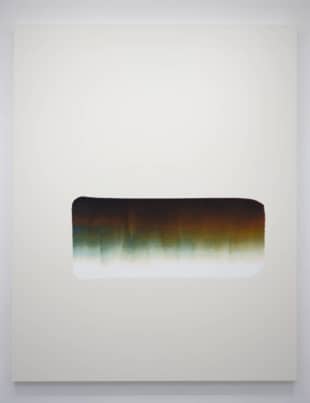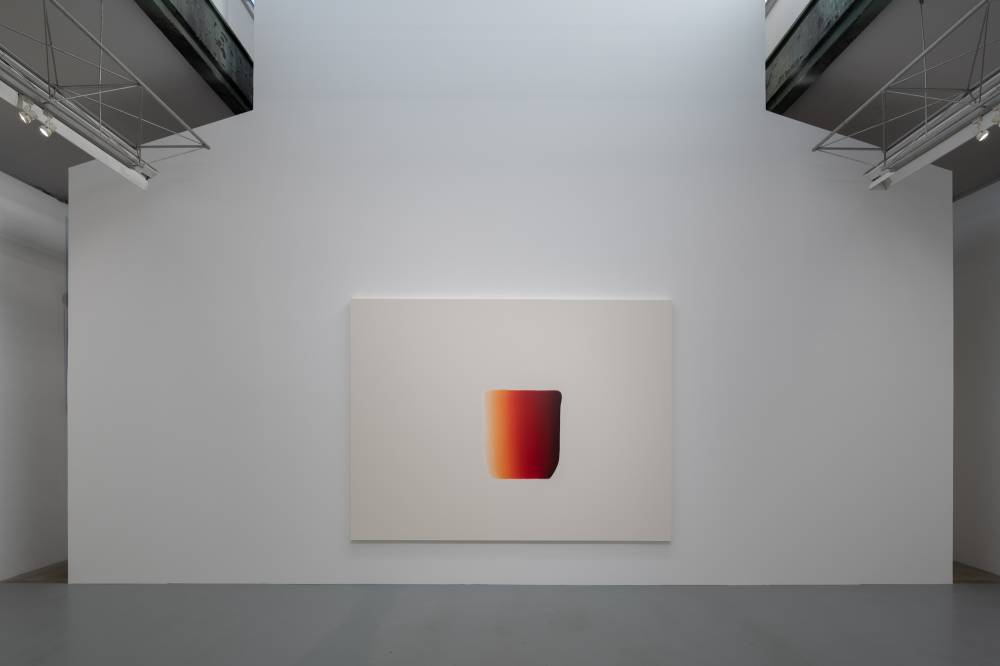Lee Ufan’s new paintings look very different depending on where you are standing. From a distance, when you can take in several of the large canvases at the same time, abstract shapes seem to emphatically announce themselves as existing; however, they are also pointedly ambiguous as to what they are. Shading is used to hint at three-dimensionality in some, resulting in what look like cylinders, or rotund pots, at a distance. If you move in closer, though, this painterly illusion disassembles into featureless gradients of colors or patchworks of overlaid brushstrokes.
Though the SCAI the Bathhouse exhibition is populated with paintings of similar shapes, each of them proclaims, in a different way, that it is not what you thought it was. One seems to be composed of broad brushstrokes that go left to right, but in fact is painted with multiple downward strokes. It also appears to have a limited brown palette, but on closer inspection there are barely visible speckles of bright red and blue around the edges of the central motif, where a dry brush seems to have caught the surface of the textured watercolor paper. These out-of-place flecks of vivid color are reminiscent of chromatic aberration in photography.



















With your current subscription plan you can comment on stories. However, before writing your first comment, please create a display name in the Profile section of your subscriber account page.